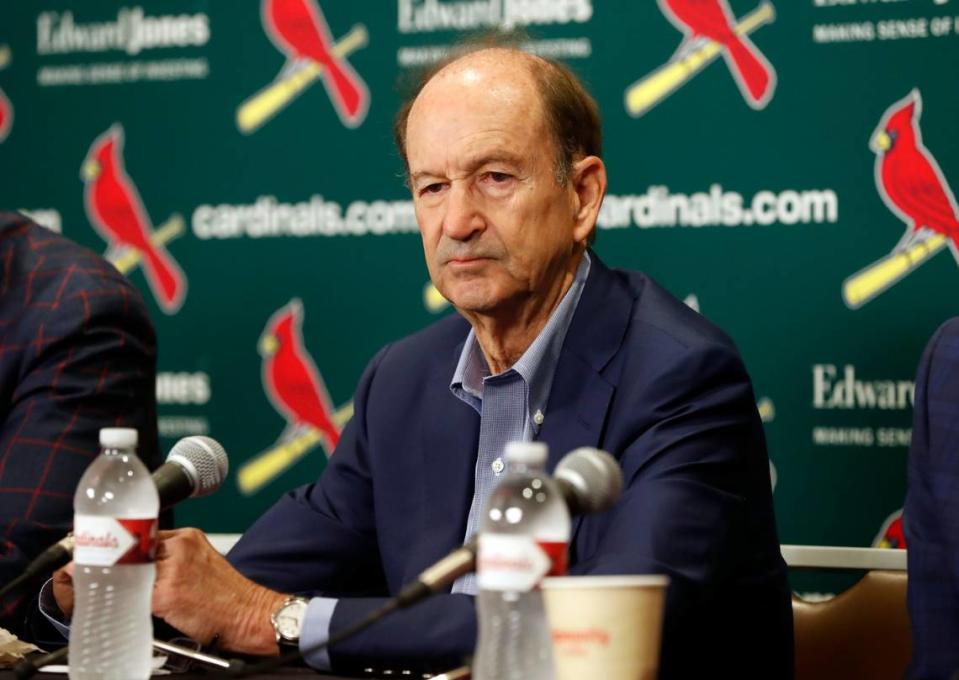Dispelling myths about the Cardinals’ payroll budget and what it should be
A persistent and pernicious myth which has hold of both fans and trained observers of baseball is that a team’s declaration of its intended payroll is a sacred trust to which they must be held at all times.
Be fooled no more and take this to heart: the money is all fake. Well, mostly.
To be sure, there is an extent to which boundaries can be pushed before there’s a material impact on the finances of a team’s ownership group. Sooner or later, the checks will bounce. What is impossible, however, is that a team might extend itself to that degree under any circumstances; indeed, there’s no logical permutation of the hot stove season in any given year which would carry such a risk.
What matters, and what is more important to understand, is the reason teams talk about payroll.
In nearly every case, it’s not purely a matter of miserliness. Instead, it’s a function of pride. The analytics revolution has brought with it an obsession with efficiency that has left front offices in the position of both wanting and needing to justify their own conclusions.
It’s not about how much a player costs. It’s about how much a player costs relative to how much a team thinks they should cost. Closest to the pin wins; who cares about the World Series trophy?
This broad misunderstanding is why both eyebrows and hackles were raised this week when St. Louis Cardinals president of baseball operations John Mozeliak suggested to reporters in Arizona that the team would seek to return its 2024 payroll to projected 2023 levels. Surely, given last season’s failures, an increase would be mandatory. Any less would be flat dereliction of duty.
That statement, though, was about projections. After starting the year with a payroll in the vicinity of $170 million, a winning Cardinals team would’ve planned to balloon that number past $200 million through in-season additions. Instead, having sold at the deadline, it sagged. FanGraphs now projects the Cardinals to be at approximately $155 million in obligations for the upcoming season.
More to the point, though, whether the team feels it has 20, 50, or even a hundred million dollars to spend on the market this winter is not the result of an edict from on high. It’s simply how much they want to spend, and it’s flexible in all directions.
Recall that acquiring Nolan Arenado prior to the 2021 season required flexing budgetary constraints and reshaping how the projected dollars might be spent; Arenado himself agreed to some mild contract restructuring to keep the green between the lines.
For the Cardinals to issue conservative statements regarding their payroll is less a function of reality and more one of their first lessons in public relations seemingly learned in a significant period of time. After 2022, the advertised increase in payroll was the leading headline entering the winter. The payroll, in fact, increased; fans remained incensed because it largely did so through loopholes and technicalities rather than new talent.
This winter, then, it’s clear that the strategy regarding finances is to under-promise and then decide the extent to which they will deliver. They’re also engaged in any number of free agent negotiations and could very well see the virtue in playing down their flexibility in an attempt to work out better deals.
There have, of course, been financial hurdles in recent years to be overcome. The effects of the pandemic and the looming collapse of television rights deals are real, but they’re hardly insurmountable.
Bill DeWitt Jr. is the chairman of the Cardinals, but the team is owned by a conglomeration of 15 entities, four of which represent the estate or assets of people who are no longer living. These are incredibly wealthy people over whom any potential burden (laughable, in the context of the larger investment) is safely distributed.
Headlines were made this winter when The Athletic reported that the San Diego Padres took out $50 million in loans to cover obligations including payroll, but the decoder ring for that story came in Evan Drellich, Dennis Lin and Ken Rosenthal’s reporting that other owners around the league are resentful of the extent to which they’ve driven up player salaries.
The loan wasn’t news. It was news that the loan became news, because it signified an attempt to embarrass San Diego chairman Peter Seidler and his investment group. The days of teams being run by true shoestring operations with capital flow problems are over; the league office has certainly seen to that.
Whether the Cardinals can manage to spend enough money this winter to return themselves to relevancy remains to be seen, but what’s clear now is that there’s no good use of energy that comes from quibbling over the dollars and cents. Teams including the Cardinals do not really, materially care about the size of an expenditure; all that matters is whether it’s too far outside the bounds of what they believe it ought to be.
Free agency, by its nature, requires stretching those bounds. In terms of pitching, the Cardinals have failed to understand that for several years running. They say, now, they’ve adjusted their paradigm accordingly.
The strategy will write the checks that ownership must be willing to cash.



